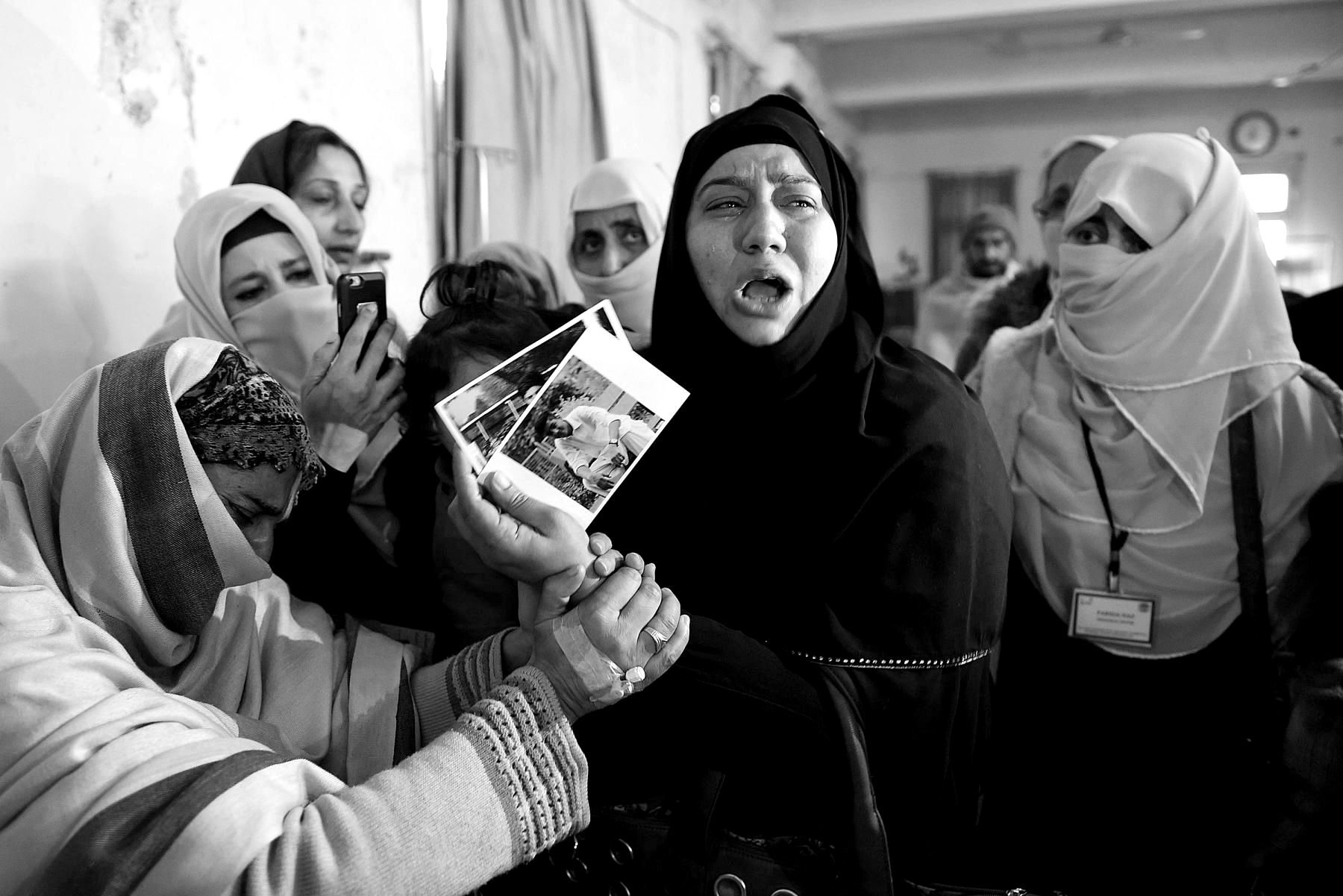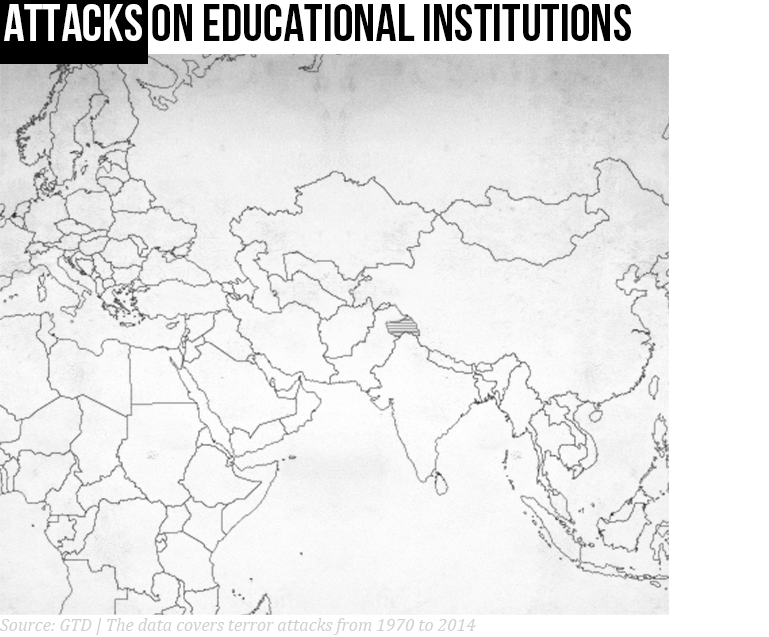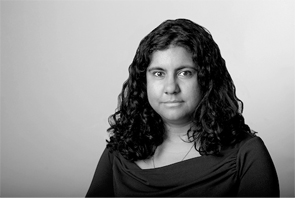Why terrorists attack education
By Naveed Hussain
Pakistan has seen most attacks against educational targets and highest number of fatalities than any other country in the world
DESIGN: AAMIR KHAN & NABEEL AHMED | Data & mapping: Khurram Siddiqui & GIBRAN ASHRAF | DEVELOPED BY: IRFAN ANSARI

“We will continue to attack schools, colleges and universities across Pakistan as these are the foundations that produce apostates,” rants Khalifa Umar Mansoor, an elusive Taliban commander, in a video he released to claim credit for a wanton killing spree at the Bacha Khan University in Charsadda last month.
Mansoor, wearing a jet-black beard and long flowing locks, brandishes his finger Bin Laden style. He is flanked by three gun-toting men, donning camouflage military battle dress and balaclavas. At the two ends, two grim-faced bearded men look menacingly at the camera with fingers on the trigger of their LMGs.
Mansoor’s long rant, peppered with a cappella taranas and crackle of gunshots, is bereft of logic and reflective of a sickening regressive mindset. Mansoor tries to justify the macabre violence in Charsadda, branding the university a ‘nursery’ of those who ‘challenge God's sovereignty’.
“This is the place where lawyers are made, this is the place that produces military officers, this is the place that produces members of parliament, all of whom challenge Allah's sovereignty,” blurts Mansoor.

A relative of a 2014 Peshawar school attack victim shows her son's pictures to a student victim (L) of the Bacha Khan University attack at a hospital in Charsadda on January 21, 2016. PHOTO: AFP
The mass killing was the second deadliest at an educational institution in Pakistan’s history. The first deadliest attack, the methodical killing of 147 people at Peshawar’s Army Public School in 2014, was also masterminded by Mansoor.
His chilling threat prompted a nationwide security review at educational institutions. Schools across Punjab and military-run educational institutions countrywide were briefly shut down, whipping up fears and concerns about campus safety.
Targeting education
Worldwide terrorist attacks against educational targets have spiked over the past decade or so. Some terrorist groups, especially the Tehreek-e-Taliban Pakistan (TTP), Boko Haram, Al Shahab and the Afghan Taliban, have increasingly used attacks on educational institutions as an instrument of terror. And the cancer is metastasising.
Of all 141,966 terrorist attacks recorded by the Maryland University-based Global Terrorism Database (GTD) between 1970 and 2014 in over 200 countries, 2.58% were against educational targets. Of these, almost half, 47.62% to be precise, took place in five countries -- Pakistan, Afghanistan, Iraq, India and Thailand -- while 66% were recorded in just the top 10 countries.
In terms of number of attacks, Pakistan tops the list with 847, or 23.15% of all attacks, followed by Afghanistan (6.29%), Iraq (6.15%), India (6.15%), Thailand (5.88%), United States (4.46%), Peru (4.13%), Turkey (3.47 %) and the Philippines (3.23%).

The map above shows the top 5 countries in terms of the number of attacks on educational institutions (first slide) and the top 5 countries in terms of the total fatalities caused in such attacks (second slide).
Pakistan: the worst-hit country
In all, 3,145 people were killed in all attacks on educational targets worldwide. More than half of the fatalities (55.52%) took place in five countries: Pakistan, Iraq, Russia, Nigeria and Syria. Similarly, 72.66% of worldwide fatalities took place in just 10 countries, Afghanistan, Algeria, India, Thailand and Turkey being the other five.
Pakistan suffered the largest number of fatalities, 410 (or 13.04% of worldwide fatalities) in the attacks. Iraq came in second in terms of fatalities, though it saw much fewer attacks on educational institution than Pakistan, while Russia ranked third in terms of fatalities even though it suffered only 25 such attacks.
Interestingly, most attacks on educational institutions in Pakistan (86.07%) were non-lethal, while globally, this figure is 72.83%. In only 13.34% attacks, less than 10 people were killed, while in the rest of the world, 25.9% attacks on educational targets saw less than 10 fatalities.
The map above shows every single attack on an educational institution in Pakistan. Hover on the orange dots to read a short description of the incident, or click on it to view further details like fatalities and injuries.
Most affected areas
Pakistan’s tribal regions have long served as safe havens for terrorists. Proximity with Afghanistan, which has been wracked by a long deadly civil war, has made the tribal regions a potpourri of militants who frequently use the porous border between the two countries to sneak in and out to mount attacks in the two countries. This tribal belt was the birthplace of the TTP, the umbrella of terrorist groups responsible for most militant violence in the country. Proximity with the tribal regions also rendered Khyber-Pakhtunkhwa vulnerable to TTP attacks.
Most attacks against educational targets in Pakistan (82%) have been recorded in K-P and the Federally Administered Tribal Areas (Fata) combined. K-P was the worst-affected region, where 439 attacks took place, followed by Fata, which witnessed 255 attacks against educational targets. In Balochistan, there have been 70 attacks, in Sindh 53, in Punjab 26, in Islamabad 3, while there has been only one such attack in Gilgit-Baltistan thus far.
Above is a heat map of all the attacks on educational institutions in Pakistan.
Who was involved?
Over a dozen terrorist groups have been involved in attacks on educational institutions in Pakistan. Religious extremist groups carried out around 20 % of all attacks with known perpetrators, while Baloch separatist groups were responsible for 0.8% of attacks on educational institutions in Pakistan.
Of the religious extremist groups, TTP carried out 17% assaults. The Lashkar-e-Islam extremist group of Mangal Bagh Afridi, which once virtually ruled the region, is in second place – but the group’s share in the total attacks is just 1.06%. Lashkar-e-Jhangvi, the group responsible for most sectarian violence in the country, the Baloch Liberation front (BLF) and the Baloch Liberation Army, separatist groups blamed for most terrorist attacks in Balochistan, share third place, as all three carried out three attacks each. Surprisingly, however, in 77.45% attacks, perpetrators were either unknown or militants were suspected of involvement.

The mother of an APS student who was killed during the attack mourns her son. PHOTO: REUTERS
In terms of fatalities, the TTP was responsible for the most deaths in all the attacks with known perpetrators. The group killed 183 people in 143 attacks it has carried out thus far. LeJ, which has carried out only 0.73% of all attacks in Pakistan is in second place as it claimed credit for 5.36% of all deaths in attacks on educational institutions. Though Baloch separatist groups attacked educational targets only seven times, they were responsible for 2.93% of all fatalities. Perpetrators for 42.44% of attacks were unknown.
Type of attack
Terrorists employed different tactics to attack educational targets in Pakistan. In nearly 80% cases, however, bombs and explosives were used to damage or destroy a target. Similarly, 7.90% of all attacks were armed assaults, while in 6.48% attacks, infrastructure or facility was targeted. Only 3% attacks involved hostage-taking.

The chart shows the number of attacks of each type that were carried out against educational institutions in Pakistan.
A ‘soft’ target
There could be no one definitive answer to this question. Possibly, terrorists target educational institutions because schools, colleges and universities are comparatively softer targets where large number of people congregate and thus offer potential for mass casualties. It’s becoming harder and harder for terrorists to attack military targets, key government buildings, hotels, embassies, and so on because they are comparatively well-guarded.
“These tend to be relatively vulnerable targets with less security than other targets. They may be more easily accessible simply due to the fact that educational institutions are typically open to the public,” says Erin Miller, who manages the GTD at the national consortium for Study of Terrorism and Responses to Terrorism (START) at the University of Maryland.
Another possible reason could be the symbolic value of such targets. In most areas, especially in Pakistan’s tribal belt, a public school symbolises the presence of state and hence, offers an easy potential target for the Taliban who have declared war against the state.
Miller agrees this could also be a possible motive. “Perhaps these [educational] targets are also viewed as extensions of the state, yet far more vulnerable than other governmental targets,” she told The Express Tribune.

Paramedics help a student who was injured during an attack by Somalia's Al-Shabab on the Moi University campus in Garissa, Kenya, April 2, 2015. PHOTO: AFP
Miller says there are ideological reasons too. “Some attacks target educational institutions due to ideological opposition to what is being taught and who is being taught in these settings.”
This is true of Al Shahab in Somalia and Boko Haram in Nigeria and their ilk. The two groups attack educational institutions because they believe Western secular education corrupts the Islamic society. Boko Haram, which can roughly be translated from the Hausa language to “Western education is forbidden”, first rose to global prominence in April 2014 when it abducted 276 schoolgirls in a western Nigeria town.
“The struggle, in the terrorists’ view, is about destroying what they see as corrupting influences — anything that is contrary to their interpretation of faith. They are determined to shut down what they see as communications contrary to God,” says Brian Michael Jenkins, world renowned counter-terrorism scholar and senior adviser to the president of the RAND Corporation.
The psychological impact of such attacks could also be a possible motive because one of the objectives of terrorism is to intimidate the public and grab attention. “Unfortunately, these horrific attacks can resonate with a very broad audience, including in general anyone who feels compassion for young people and children, and parents in particular. Because of this they have the potential to be exceptionally impactful, more so than more secure, less vulnerable targets,” says Miller.
Jenkins, who formerly served as chair of the Political Science Department at RAND, believes TTP’s case is apparently similar to that of Al Shahab, Boko Haram and the Afghan Taliban. “What is happening in Pakistan may not be that different from what has happened in Nigeria or Afghanistan where religious fanatics have attacked secular educational institutions, Jenkins told The Express Tribune.
True, because the Pakistani Taliban have avowedly opposed Western secular education. In October 2012, they shot and critically injured Malala Yousafzai, a teenage girl in Swat district of Khyber-Pakhtunkhwa for campaigning for girls’ education in the region. Malala has since become a global icon, winning the 2014 Nobel Peace Prize.
Prof Boaz Ganor, Founder & Executive Director at The International Institute for Counter-Terrorism (ICT), Herzliya, Israel, has a different interpretation, however. He believes not all terrorist groups attack educational targets.
“We see this trend (attacks on educational targets) in many areas in which Salafist–Jihadist terrorists are active, mainly in African countries (attacks which are being conducted by Boko Haram, Al Shabab, Al Mourabitun, Al Qaeda in the Islamic Maghreb and others), and in the Middle East and Central Asia (attacks being conducted by Al Qaeda, ISIS, Al Qaeda in the Arabian Peninsula and others),” Prof Ganor told The Express Tribune.
Peter Knoope, Senior Visiting Fellow at the International Centre for Counter-Terrorism (ICCT), The Hague, agrees with Prof Boaz. He says connections between different terrorist organisations in the world have rapidly intensified and professionalised over the last five years.
“Hence the similarities in the way they recruit, strategise and operationalise. There are obviously differences and adaptations to local conditions. But that is part of the professionalism, rather than a variety of motives,” Knoope, who was the Director of ICCT from its inception until August 2014, told The Express Tribune.
Why Islamic extremists abhor Western education
“Western education is considered by terrorists as a phenomenon that dates back to colonialism and Western domination. It spreads Western thinking. As opposed to the ‘pure’ religious education delivered by Quranic schools,” says Knoope.
“Originally, Western education was introduced in many countries by missionaries as part of their ‘service delivery’ system that also brought Christianity. The resistance to this type of education that is considered to be part of the export of modernity from the West explains the choice of target.”
Modern education is the biggest threat to the obscurantist and regressive ideology of terrorists. Jenkins says a well-educated population poses a direct threat to their beliefs and therefore their power. “If they can shut down rival education, they will achieve a monopoly on the minds of the future.”
Prof Boaz endorses Jenkins. “Terrorists fully understand that education for peace, human rights, minority and women rights as much as democratic and liberal values are contradictory to their massages and posing the biggest threat to their ongoing radicalization efforts,” says Prof Boaz, who is also Dean at Lauder School of Government, Diplomacy & Strategy.
“This is the reason for their effort to deter teaching, religious clerics, and education systems by attacking them and the students themselves with terrorist attacks.”
Reprisal plus ideological motives
In a video message after the Peshawar school massacre, TTP commander Mullah Fazlullah described the target as a ‘military camp’, and said their attack was in retaliation for the military operations against them in the country.
“In some cases, the claims of responsibility for these attacks reference specific, retaliatory motives, such as terrorist attacks carried out in retaliation for military operations,” says Miller. “However, consider that a retaliatory attack can really take on any target or tactic, so it is likely that the choices of targets are made with a great deal of intention on the part of the perpetrators.”
However, towards the sign-off of the video, the fugitive cleric ridicules Western life, branding democracy a ‘lie’ and ‘forbidden’, saying: “Democracy is Kuffr (apostasy) and Haram. We only obey Sharia.” This makes the underlying motive clearer.
The map above shows all TTP attacks on educational institutions in Pakistan over time.
What should or could be done
The Charsadda attack triggered a nationwide outcry over inadequate security at educational institutions. The military was blamed, in hushed voices though, for failing to prevent the attack. And even the success of the ongoing military operations was called into question. Is it the military’s job to secure every educational institution? Realistically speaking, no. It’s not. Then what should be done?
Knoope recommends a range of steps. “The same measures [should be taken] that secure other places like sports and cultural events. Information is [the] key. Information is mostly derived from communities. Community-law enforcement connectivity is lifesaving. Trust building between state institutions and the general public or citizens is of paramount importance. Proper security measures can be helpful as well.”
Prof Boaz, however, believes there are endless potential targets for terrorists and it is practically impossible to secure each one of them. Prior intelligence warning can prevent such attacks. “Counter terrorism efforts should be based on good intelligence capabilities. There is a crucial need to know about the intentions of terrorists and their plans before the attack is being executed and to prevent the attack by using offensive or defensive measures.”




